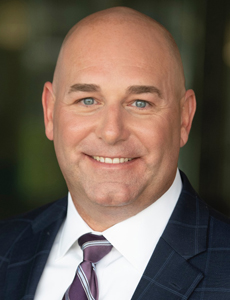Can a Connected Risk Ecosystem Really Stop Claims Before They Happen?

Stopping claims before they happen is the ultimate goal of risk management.
And while achieving an absolute zero claims status is impossible, moving to a reality where insurers, risk managers and policyholders work together to reduce the probability of loss is the goal of many predict-and-prevent risk management programs.
Technology allows us to move risk management to the next level. A connected ecosystem can help stop claims before they happen — a topic that was covered at the Insurtech Insights conference in New York City.
A multidisciplinary panel of experts tackled this issue and presented their diverse opinions.
Moderator Andrew Schwartz, insurance analyst at Celent, led the discussion between incumbent representative Paul Primavera, EVP at Lockton Companies; Insurtech leader Brent Williams, founder and CEO at Benekiva; and Insurtech consultant Alan Demers, founder and president at InsurTech Consulting.
Rising Claims Costs Are a Challenge for Insurers
Schwartz introduced the session by describing the challenge insurers face: “Rising claims costs are a massive problem for carriers, and some tactics, like preventing a claim before it happens, hold a lot of promise … It’s prevention as well as response.”
A Swiss Re report published earlier in 2023 highlighted some of the reasons for rising claims costs, which are being felt in markets across the world. Swiss Re estimated a 5 to 7% increase in claims payouts in 2022 based on inflation alone, and another 6.5% increase is possible in 2023.
Other pressures on claims costs remain consistent, like high construction costs, supply chain issues and increases in medical and labor charges. Added to these pressures is the increased volatility in extreme weather conditions, like the wildfires, droughts and tropical storms we have experienced in recent years.
Demers pointed out that losses are top of mind for any claims organization, especially this year, after a heavy first quarter of catastrophe and weather losses on top of existing challenges with repair costs and the ever-present inflationary pressures. With this challenging landscape for insurers, focusing on mitigating losses or preventing them in the first place is a sound strategy, especially as claims costs are rising.
Primavera explained his perspective: “Pre-loss mitigation is a joint collaboration between insurers and policyholders. There needs to be a greater balance in identifying key loss drivers. Loss avoidance programs will benefit policyholders as well as insurers.”
Mitigate Losses and Prevent Claims Before They Happen
If mitigating and preventing claims before they happen is a joint effort between insureds and insurers, as Primavera noted, there must be an education component for policyholders. Individuals and businesses can take steps to reduce their risk exposures — but only if they know what steps to take and understand the potential reward of taking pre-loss action.

Brent Williams, founder and CEO, Benekiva
Williams said, “From a prevention standpoint, it’s about wellness, how to educate people. Claims will never go away. It’s more about how we can mitigate and prevent, and when we do have claims, which ones can we pay and move on from without a human looking at them. It’s about automating the process as well as mitigation and prevention, because at the end of the day, claims aren’t going away.”
He added, “It’s not only education but it’s shifting the paradigm that preventing losses is better for policyholders and how it lowers premiums.”
Demers agreed, saying there is “room for promotion and education, along with tools and incentives to show policyholders these things will help.”
But the value must also be there for consumers. “The cost-benefit isn’t always there when people invest in preventative measures, like water sensors,” explained Primavera. The premium reduction has to accompany the investment made by the policyholder.
Shifting the reality to one where insurers and policyholders actively work together to mitigate and prevent losses is about finding ways to show policyholders that preventing losses is a best practice for many reasons, not least of which is reducing their premiums.
Incentivizing policyholders to take action to reduce their potential for loss is an effective strategy insurers have deployed before — by giving discounts to auto insurance customers who take safe driving courses or homeowners who install home security systems, for example. But as the panel warned, the incentives must match the investment.
And then, as Williams pointed out, there’s a benefit to focusing on automating the right processes to streamline claims. Straight-through processing of claims with no human involvement means first identifying the parameters for which types of claims will be automated, then deploying technology to process claims to meet customer demands and compliance guidelines.
The Connected Ecosystem of the Future Starts Now
There is a dichotomy between the ways in which commercial lines and personal lines view and deploy loss control methods. Commercial customers have traditionally benefited from proactive risk mitigation and loss control measures, but now the industry is seeing more of these controls being introduced to personal lines consumers. These measures can help reduce the total impact of the claim, even if they do not stop the loss altogether.
“Loss control has always been feasible for commercial accounts because of scale, training programs, loss avoidance methods, safety management and technology. Now, it is coming downstream to retail and personal space. Telematics for safe driving, crash detection and water leak sensors are all becoming affordable. Technology is better and faster, and data is more abundant,” Demers said. “Now we need adoption.”
The idea of the connected ecosystem means combining and integrating tools and technology to facilitate faster handling, a better customer experience and lower costs. Williams said, “We have to be able to connect and integrate these tools and drive these ‘one plus one equals three’ scenarios.”
Demers cautioned, “We have a framework to facilitate a connected ecosystem and a long way to go.”
Primavera added, “Even though we have a long way to go, it’s needed in the industry. Because of that need, it will progress along. A tool is always just a tool. The process of instituting that tool is the value.” &









